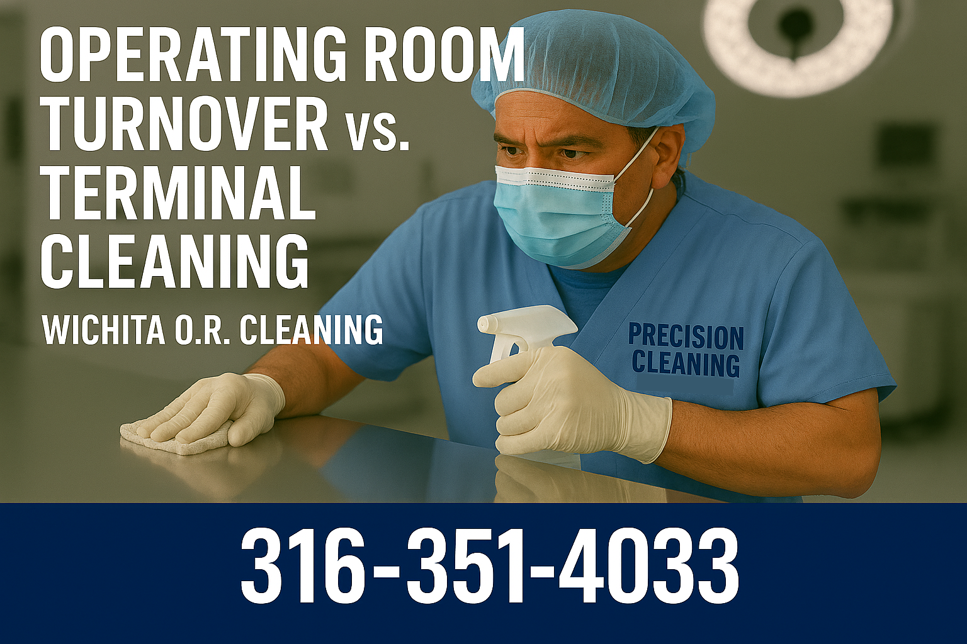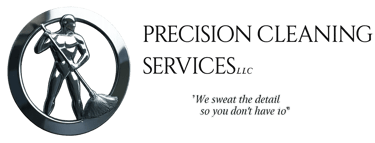Operating Room Turnover vs. Terminal Cleaning | Wichita OR Cleaning
OR turnover and terminal cleaning done right in Wichita & South-Central KS. Validated dwell times, proper sequencing, and audit-ready documentation. Call 316-351-4033
Blaine M. Gales
10/9/20253 min read


Inside the Cleanroom, Part 1: O.R. Turnover vs. Terminal Cleaning (Wichita Guide)
Call: 316-351-4033
Turnover cleaning is the fast, repeatable reset between cases. The goal is to remove bioburden from high-risk, high-touch zones and return the room to service without drifting from validated protocol. Our teams work a tight, clockwise path so we never backtrack contamination into a clean area. Critical touchpoints—OR table and rails, light handles, anesthesia cart surfaces, monitors, pumps, cords, push plates, and floor margins in the splash zone—are cleaned first to physically remove soil, then disinfected with EPA-listed products matched to your organism profile and surface materials. We verify dwell times on every pass so the chemistry actually works, and we swap microfiber by color code to prevent cross-use between anesthesia zones, general surfaces, and floor work. When a case runs long or complexity spikes, we scale staffing on the fly so turnover speed never compromises compliance.
Terminal cleaning is the full reset. Once the day’s schedule ends—or when an isolation protocol requires it—we expand to every surface in the room envelope: walls and kick plates, cabinet faces and hardware, wheels and casters, air vents and ledges, booms and mounts, baseboards and the full floor. Soil removal precedes disinfection so we’re not applying product over residue that blocks kill claims. For stubborn organic load, we add no-rinse enzymatics before disinfection; for complex geometries, we deploy no-touch application to maintain even coverage; and when your policy allows, we include UV-C as a supplemental step—not a substitute—for a consistent terminal outcome. Floors get special attention: we extract soil from seams and edges, then finish with a method compatible with your surface (VCT, sheet vinyl, epoxy, or sealed concrete) to protect slip resistance and cleanability.
Everything hinges on materials compatibility and sequencing. Not every disinfectant belongs on every surface, especially in rooms with mixed finishes and sensitive equipment. We select hospital-grade chemistries for efficacy and material safety, document the dwell times they require, and align with your infection-prevention team on wipe vs. spray vs. no-touch in each zone. Our crews follow PPE and bloodborne-pathogen protocols, maintain sharps awareness and regulated waste separation, and keep biohazard handling within your facility’s chain of custody. The results aren’t just visible; they’re defensible—backed by product logs, SDS, equipment maintenance records, and optional ATP hygiene checks when you want an objective spot audit of process control.
Why such a big deal about floors? Because floors are an infection-control asset when they’re maintained right. In the OR, we work edges, seams, and under-table zones where splash and spatter settle; in adjoining corridors, PACU, and sterile core, we tune methods to protect appearance, traction, and quick turnarounds. Where finish fatigue or discoloration appears, we schedule deep scrub and recoat—or strip and refinish when necessary—so daily disinfection remains smooth, fast, and consistent. That discipline prevents the “graying” that signals soil load and helps your teams move confidently from case to case.
Documentation ties everything together. We provide clear task sequences for turnover and terminal cleans, product/dwell sheets by area, and service reports that match your internal QA format. If your survey window opens unexpectedly, your environmental services leadership can pull a clean trail: who serviced the room, with what chemistry, in what order, and how exceptions were handled. When case mix changes or construction shifts airflow and dust load, we adjust frequencies and staffing, then log those changes so your records show proactive control—not guesswork.
Hospitals don’t close for storms or weekends, and neither do we. Precision Cleaning Services offers 24/7 emergency sanitation support across Wichita and South-Central Kansas, stabilizing rooms after unexpected events and helping keep schedules on track. Beyond the OR, our healthcare program covers patient rooms, labs, imaging, and public areas, plus full janitorial, tile and floor care, and concrete sealing/staining for the non-clinical zones that support care.
If your goals are safer turnarounds, consistent terminal results, and audit-ready documentation, bring in a team that treats the OR like a system, not a checklist.
Call: 316-351-4033 to schedule a walk-through or request a policy-aligned proposal.
Next in Part 2: Floors that Fight HAIs—how VCT, sheet vinyl, epoxy, and grout maintenance directly supports infection prevention and speeds daily cleaning.
Your trusted partner in industrial and commercial floor care and janitorial service solutions.
MESSAGE US TODAY
316-351-4033 (24 hrs x 7 days)
© Precision Cleaning Services LLC
All rights reserved.


Proudly Serving:


We accept:
